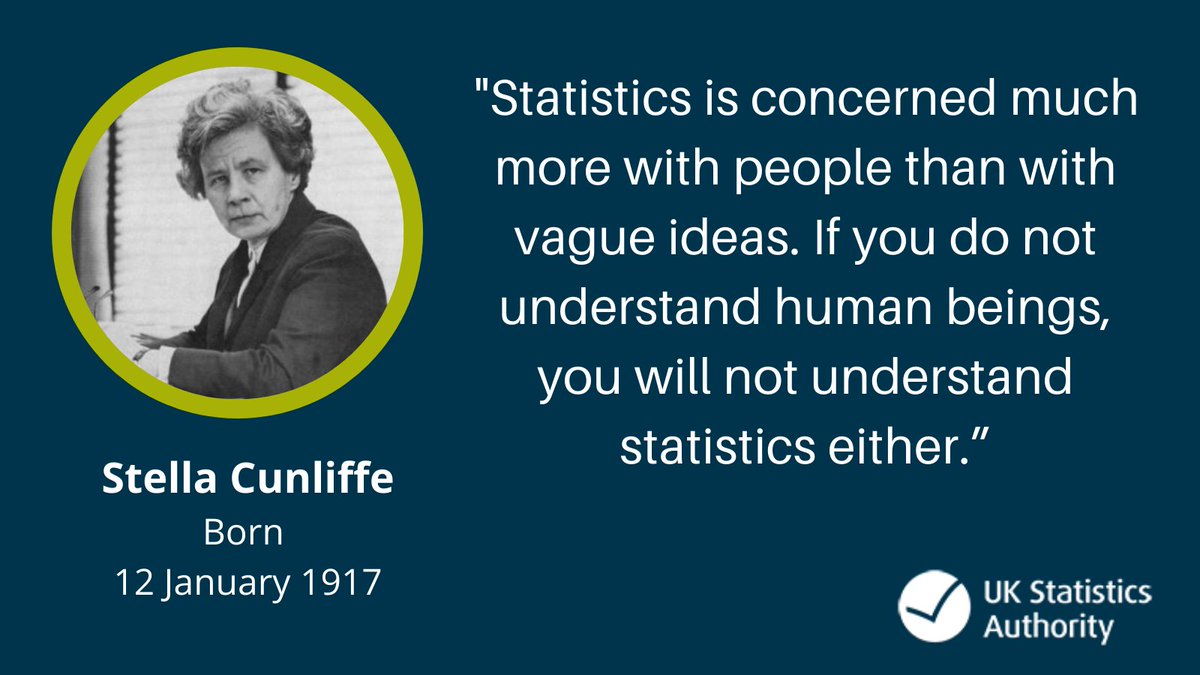On this day in 1917, Stella Cunliffe was born. She became the first female President of the @RoyalStatSoc in 1975 and during her life was associated with many famous institutions including the British Girl Guides, the Guinness Brewery and the Home Office. 1/9
Born in Surrey, she was the first person from her school to go onto University, gaining a degree in Economics from the London School of Economics in 1938. 2/9
Her statistical career began in 1939, when she joined the Danish Bacon company, working on food allocations. During the war she was in charge of rationing in London. The bacon ration was 3 or 4 rashers per person per week. 3/9
At the end of the war she joined The Girl Guides and went to Europe to help feed the war refugees. She was also among the first civilian volunteers to go to Belsen Concentration Camp to oversee the de-lousing of inmates there. 4/9
Cunliffe then took a job as a statistician at the Guinness Brewery @GuinnessGB where she stayed for 25 years. It was here that she famously redesigned the instructions for quality control workers who had to accept or reject the handmade beer barrels. 5/9
Workers had to push rejected barrels uphill to be remade, which was difficult and created a bias to accept barrels even if they were flawed. Cunliffe changed this so that it was equally easy to reject or accept a barrel, eliminating the bias and making Guinness better. 6/9
In 1970 she joined the civil service and rose to become Director of Statistics for the Home Office, the first female to attain this grade. During her time at the Home Office she pioneered the department's statistical capabilities, and established a dedicated computing team. 7/9
Her analysis of international crime and punishment statistics helped influence prison reforms, in particular by showing that there was no evidence that capital punishment made a difference to murder rates. 8/9
She was an advocate of applying statistics to solve critical problems in human behaviours and was quoted to have said “Statistics is concerned much more with people than with vague ideas. If you do not understand human beings, you will not understand statistics either.” 9/9

 Read on Twitter
Read on Twitter





